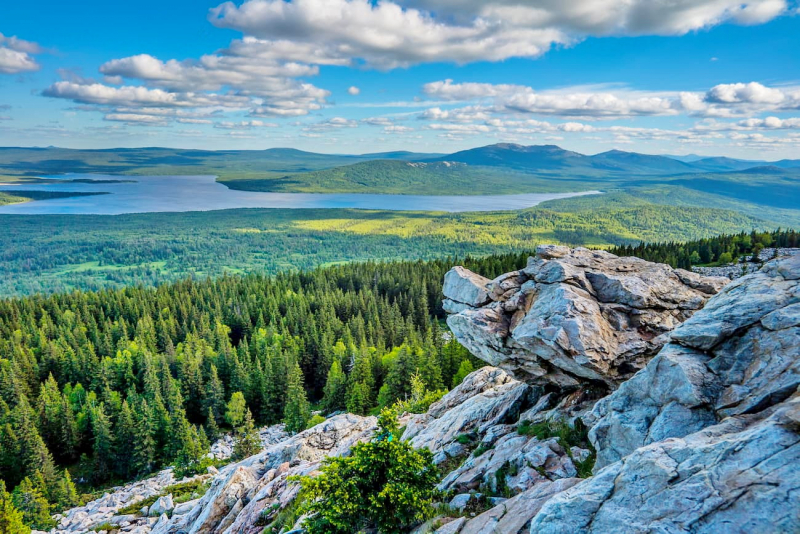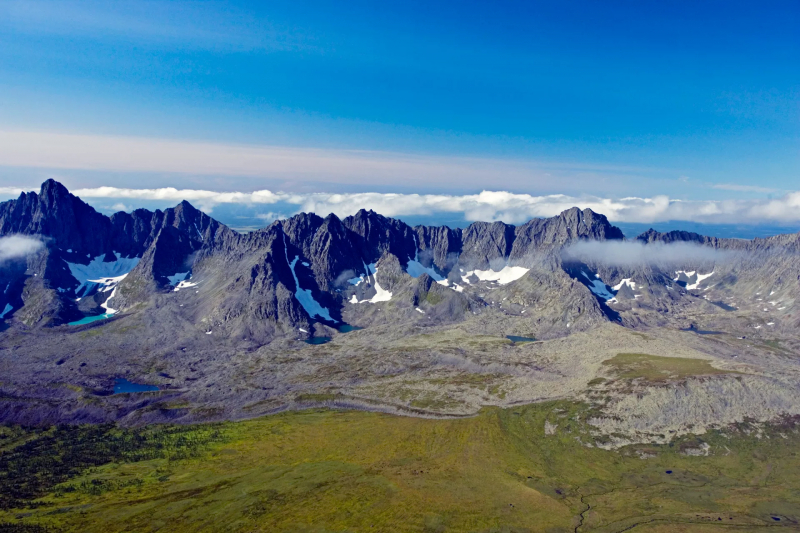Ural Mountains

The Ural Mountains, sometimes referred to as the Urals, Uralskie Gory, or Ural, are one of the great mountain ranges in west-central Russia that makes up a significant portion of the traditional physiographic border between Europe and Asia. The mountains make up the majority of the Uralian orogenic belt, which stretches 2,175 miles (3,500 km) from the Aral Sea to the northernmost tip of Novaya Zemlya and stretches 1,550 miles (2,500 km) from the bend of the Ural River in the south to the low, severely eroded Pay-Khoy Ridge, which forms a 250-mile (400-km) fingerlike extension to the northern tip of the Urals proper.
The Mughalzhar Hills, a large, arrowhead-shaped southern extension in northwest Kazakhstan that separates the Caspian and Aral basins, are themselves a part of the Uralian orogenic band. Although the northern and southern courses of the Urals are rather short, ranging in width from from 20 to 90 miles (32 to 145 km), they pass over the enormous latitudinal zones of the Eurasian landmass, from Arctic waste to semidesert. The Urals are also the home of peoples with ancient roots and are a component of a highly developed industrial complex that is linked to the mineral-rich Siberian region.
Location: west-central Russia and the major part of the traditional physiographic boundary between Europe and Asia
Lenth of range: 1,550 mi











